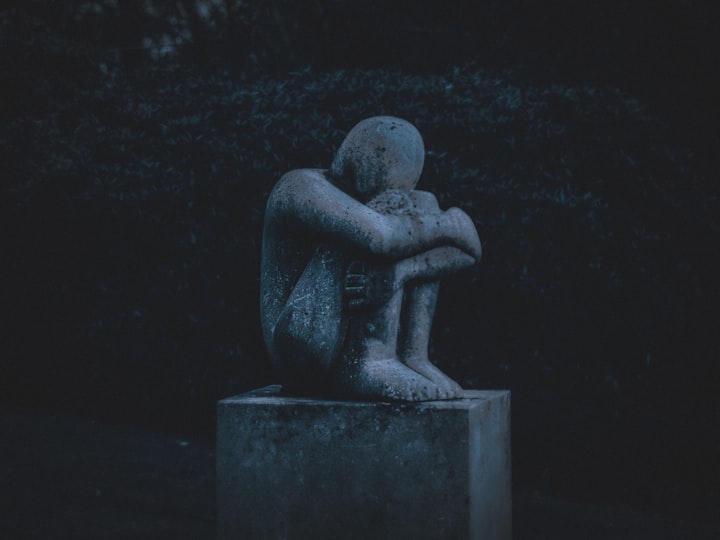How to help a family member or friend with anxiety problems
These tips will help you give effective help to a loved one with anxiety problems

In 2019, around 301 million people in the world suffered from an anxiety disorder. The health crisis caused by COVID-19 and social networks have contributed to exacerbating this problem and an increase in anxiety levels has recently been observed in the general population. After the first year of the pandemic, the prevalence of anxiety and depression worldwide increased by more than 25%, according to statistics published by the WHO.
The close environment of people suffering from anxiety disorders often do not know how to help them. This often makes them feel frustrated and confused when trying to support or support their loved ones. It is recommended that family and friends who surround people with anxiety know what to do to provide adequate support without overloading the person.
In this article you will find several key ideas on what to do to help someone who suffers from anxiety . This set of general guidelines includes being supportive without pushing too hard and tips on what to avoid when supporting someone with anxiety.
What can we do to help someone with anxiety problems?
Anxiety always appears as a response to a situation that people suffer involuntarily and automatically. In many cases, this feeling causes more harm than good; it also makes people suffer and experience different sensations of discomfort.
Anxiety disorders are the most common class of mental illness in Western countries such as the United States, affecting 40 million adults over the age of 18. Knowing the signs of this disease and knowing how to deal with them can help us to recognize, as well as to deal with a close person who suffers from an anxiety problem.

Anxiety disorders require people to change habits and learn new ways of relating to anxiety and the events that trigger its symptoms. Family and friends are often essential in helping patients develop these new routines. Once adopted, these practices can help people with anxiety disorders gradually decrease anxiety symptoms and related problems.
Below you will find a series of guidelines, grouped into 4 main categories, to support people with anxiety problems; These tips range from the simplest actions to seeking external help in cases that require it .
1. Learn to recognize the signs of anxiety
Watching a loved one suffer from frequent panic attacks and dealing with daily anxiety can be extremely distressing. However, there are things that can be done to help. The first includes learning to recognize the signs of the problem and the frequent symptoms that a person with an anxiety problem faces, detecting the warning signs that are associated with a possible disorder: a phobia, generalized anxiety disorder, tendency to suffer panic attacks, etc.
People with anxiety problems often show noticeable changes in their behavior. These changes may result from an immediate response to the anxiety problem or be the indirect consequence of hiding the problem, in the case, for example, that the person feels ashamed. Some examples of these behavioral disturbances are: decreased interest in certain previously enjoyable activities, frequent mood swings , irritability and withdrawal, making excuses, and avoidance of specific situations. Other signs may include the search for safer conditions and the expression of defensive attitudes such as suspicion and vigilance.
2. Find information
Finding out what is happening is the first thing, for this it is convenient to inform yourself and try to understand the situation. The information makes it possible to make sense of the problem and understand how it can really be helped. By increasing the level of understanding we can also make informed decisions. In the case of anxiety problems, information can be obtained from two main sources: the person involved and informative articles.
When someone has an anxiety problem, it is important to listen actively to try to understand what is happening to them. This means paying attention to what they are experiencing without second-guessing their word, dismissing what they have to say, or passing judgment. If the patient has already seen a professional, it is helpful to show interest in the evaluations or ideas that the specialist has suggested .
It's also helpful to consult specialized, in-depth articles when it comes to understanding anxiety. This type of information can be found in books, accredited web pages or from specialized health professionals. These documents cover topics such as what anxiety is, symptoms, causes, types, and possible treatments.
3. Put ourselves in a position to help without judging
Putting yourself in a position to help is a process similar to active listening; both are related to being a receptacle of the problem. This idea refers to someone's ability to empathize, take the victim's perspective, and offer help.
As we have seen, anxiety produces a whole series of unpleasant sensations, although it is necessary to be able to speak, doing it too much can be counterproductive and help the manifestations to persist. Instead, it is recommended to adopt an understanding attitude; this implies listening and being willing to do so, but only when the other needs it. This has more to do with availability and trust than with listening itself , it is showing the other that we are there for what he needs. In addition, to put ourselves in a position to help we can:
3.1. Share the worries
Sharing your worries and fears with others can provide a little relief. Although this is only temporary, it provides a break from stress. Being able to talk can mean a respite from discomfort: while these concerns don't go away, by involving others they can at least remain under some control .
3.2. Don't trivialize the situation
It is important to avoid trivializing or disqualifying the person with anxiety problems. Doing this will make them feel judged, ridiculed, and rejected. Instead, try to avoid fights, reprimands, and ironic comments; it is about helping the person to feel that we understand their problem and accept it.
3.3. Don't blame the person
When a person is suffering, it is useless to blame them or try to make them take charge of the situation. This only makes them feel powerless and more anxious, probably the same anxiety prevents them from implementing solutions or taking responsibility for the problem. Instead, it's better to accept the current situation and find ways to help that don't involve blame or empty advice.
3.4. Don't worry too much
Relieving the patient's anxiety must be done carefully; trying to do it in a dramatic way can increase the other's stress . If the other feels responsible for our discomfort, this would have a negative effect by increasing her anxiety levels instead of reducing them.
3.5. objectify the situation
Help the person with anxiety to consider situations in a more realistic and accurate way. Anxiety tends to involve overvaluing threats and undervaluing resources. It is important for someone dealing with anxiety to understand that she can find answers to her own problems. Emphasizing this can help them develop realistic expectations about what their solution might look like. It should be remembered that objectifying the situation means encouraging the person to face her fears instead of protecting them and confirming their unreasonable suspicions of her.
4. Seek external support from a professional
For some patients with anxiety, finding specialized help is an extra source of stress, and in this sense, relying on family, friends and loved ones in the search can reduce the tension to the original problem. The important thing is that, in situations of this type in which the person feels so anxious that it limits them on a day-to-day basis, they end up going to therapy.






Comments
There are no comments for this story
Be the first to respond and start the conversation.